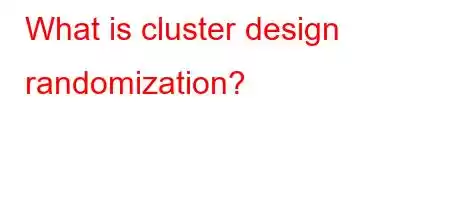What is trending Kume-design randomization?
Contents
What is cluster design randomization?
A cluster randomized controlled trial is a type of randomized controlled trial in which groups of subjects (as opposed to individual subjects) are randomized. Also known as cluster randomized controlled trials, cluster randomized trials, group randomized trials, and site-randomized trials.
What are the types of randomisation?
Completed Randomisation. Restricted Randomization.
Permuted Block Randomization. Efron Method (Biased Coin Design, BCD) Urn Method. Stratified Randomization. Minimization Method. Response Adaptive Randomization. Randomized KO (RPW)What is the randomization method?
Randomization prevents conscious or unconscious “manipulations” in selecting patients for treatment groups. The easiest randomization method is simple randomization. For example, determining the treatment to be given to patients by tossing a coin is a simple randomization method.
Where to write a hypothesis in an article?
The last paragraph is very important. This paragraph usually makes it clear in the first sentence of the paragraph which empirical question will be answered by the present study. Accordingly, the hypothesis is explained.
What are the randomization methods?
What does it mean to randomize?
randomized in english. It is used to describe experiments done in scientific articles. randomizing means random selection of subjects. For example, in the trial of the effects of a drug, if the control group is given a placebo *, this type of trial is called a randomized controlled trial.
What does randomized trial mean?
Randomized controlled trial; It is a study model in which people with similar characteristics are divided into experimental and control groups in order to test a new drug, a treatment or another type of intervention. The researched intervention method is applied to the experimental group and the results are compared with the control group.
Read: 189


